Abstract
A survey was made of the bacteriological quality and chlorine content of 33 public and private water systems that utilize redwood storage tanks. Coliforms of the genera Klebsiella and Enterobacter were isolated from 9 of 10 private drinking water systems and from 11 of 23 water systems in state and federal parks. Total coliform counts in the private systems exceeded federal membrane filter guidelines by as much as 10-to 40-fold. Coliform counts were highest in the newer reservoirs. Factors contributing to poor water quality are: lack of automated chlorination equipment or an insufficient supply to maintain a residual, common inlet/outlet plumbing design, and lengthy average retention periods. The latter two factors contribute to improper mixing and stagnation of the water, whereas the former allows microbes to multiply on the water-soluble nutrients that leach from the wood. Wooden reservoirs exert a high chlorine demand, and 0.4 ppm of chlorine residual in the incoming tank water proves inadequate. It is suggested that specific water-soluble nutrients in redwood (and in numerous other types of botanical material) induce a natural nutritional selection for coliforms of the tribe Klebsielleae.
Full text
PDF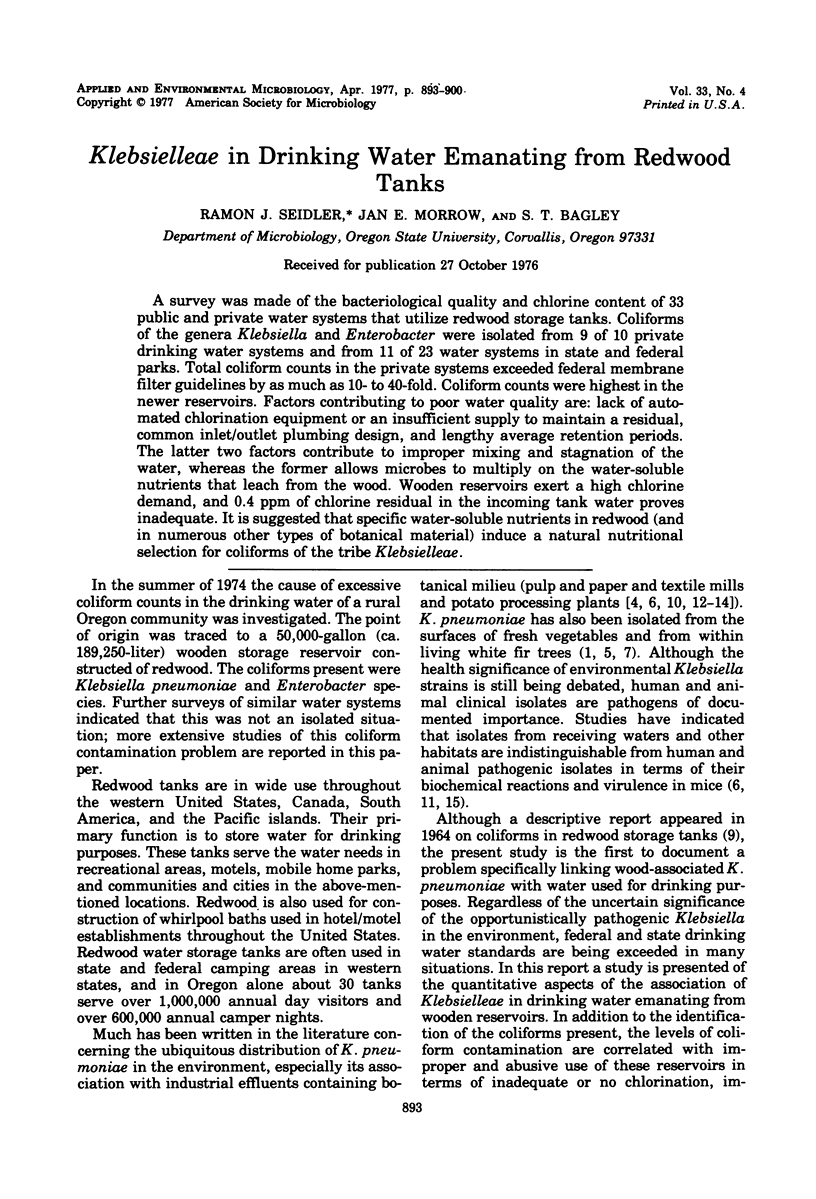
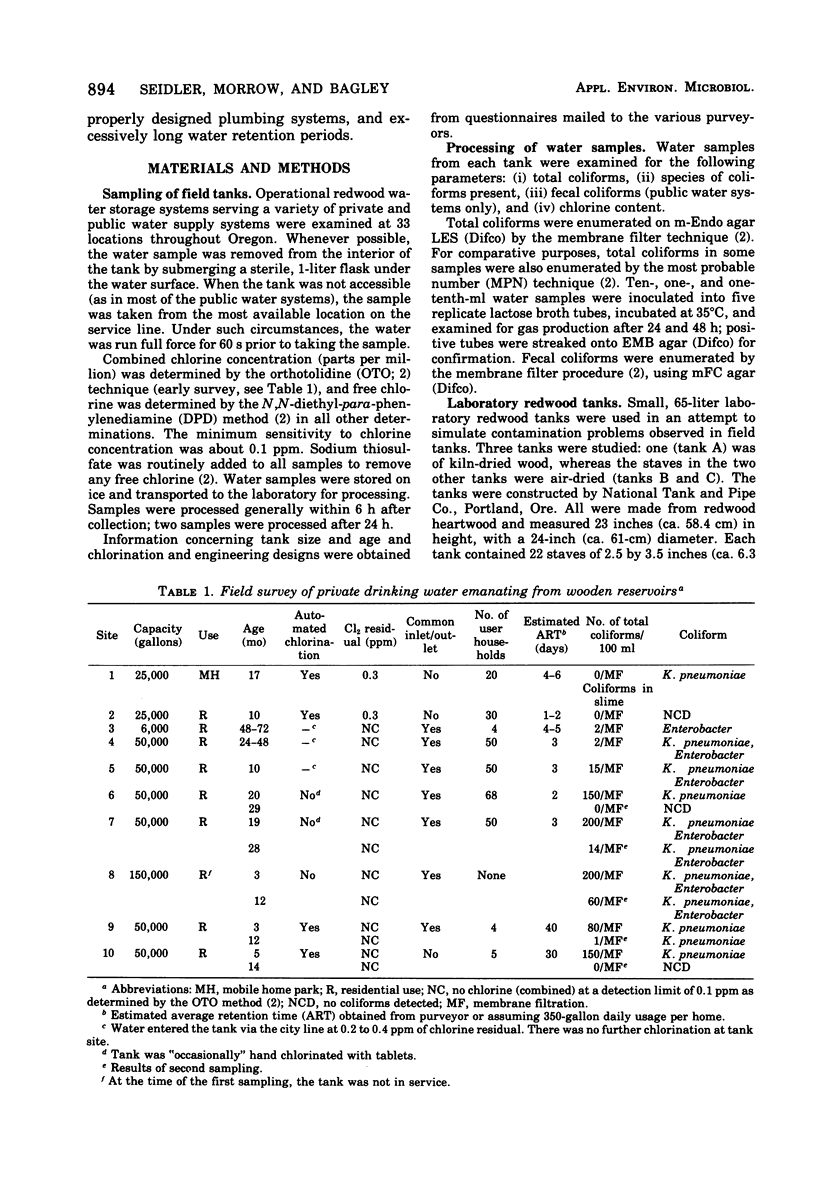
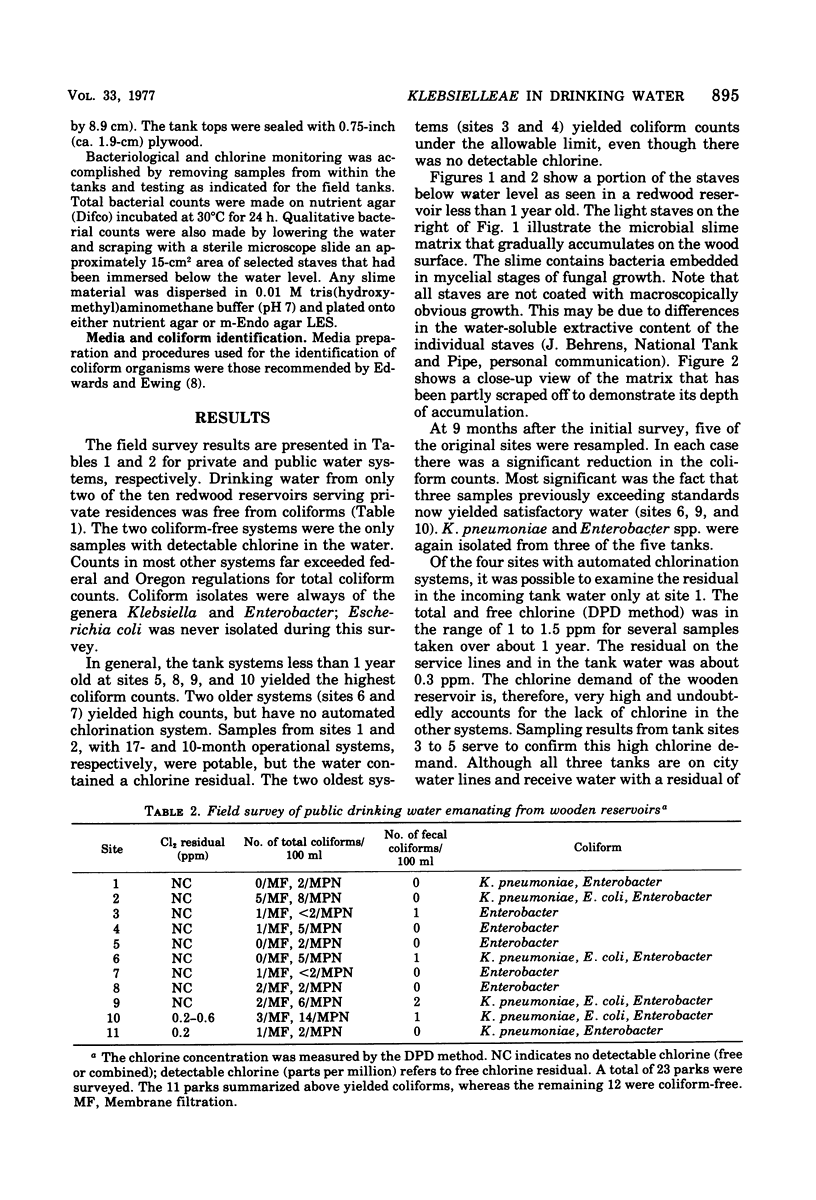
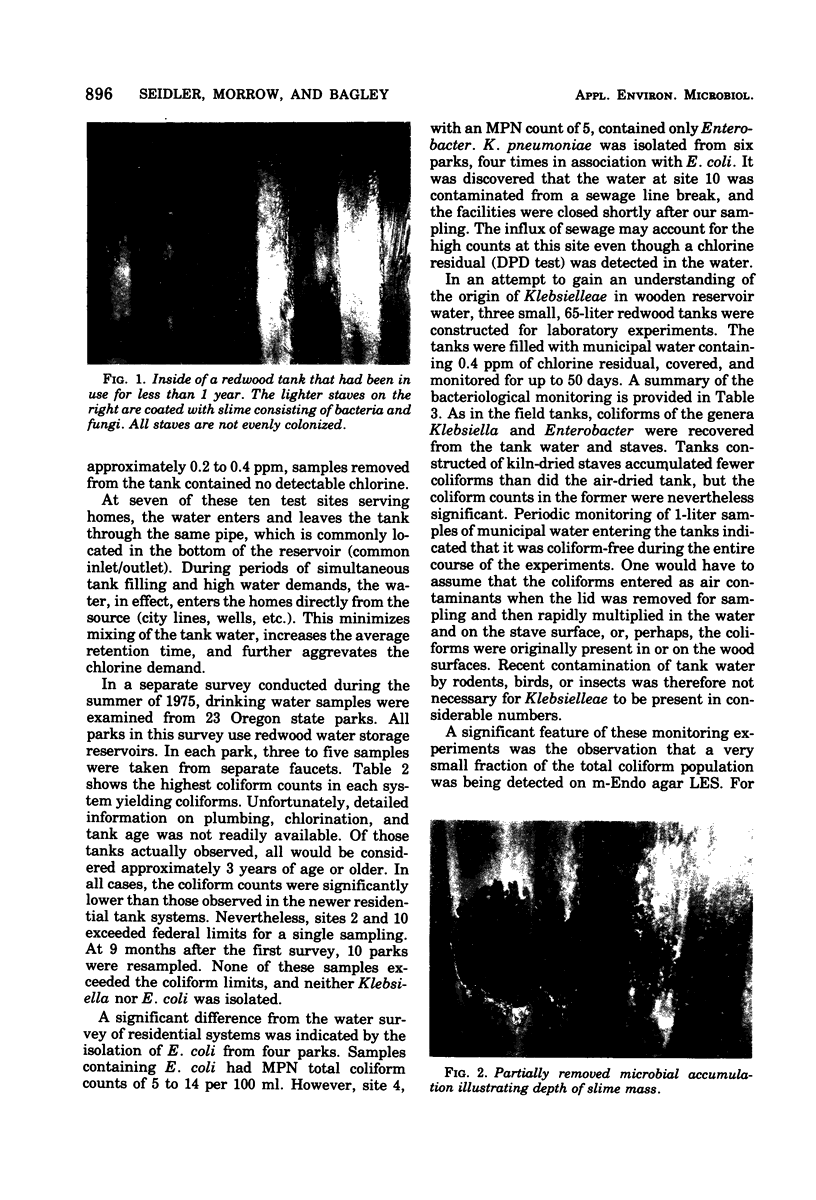
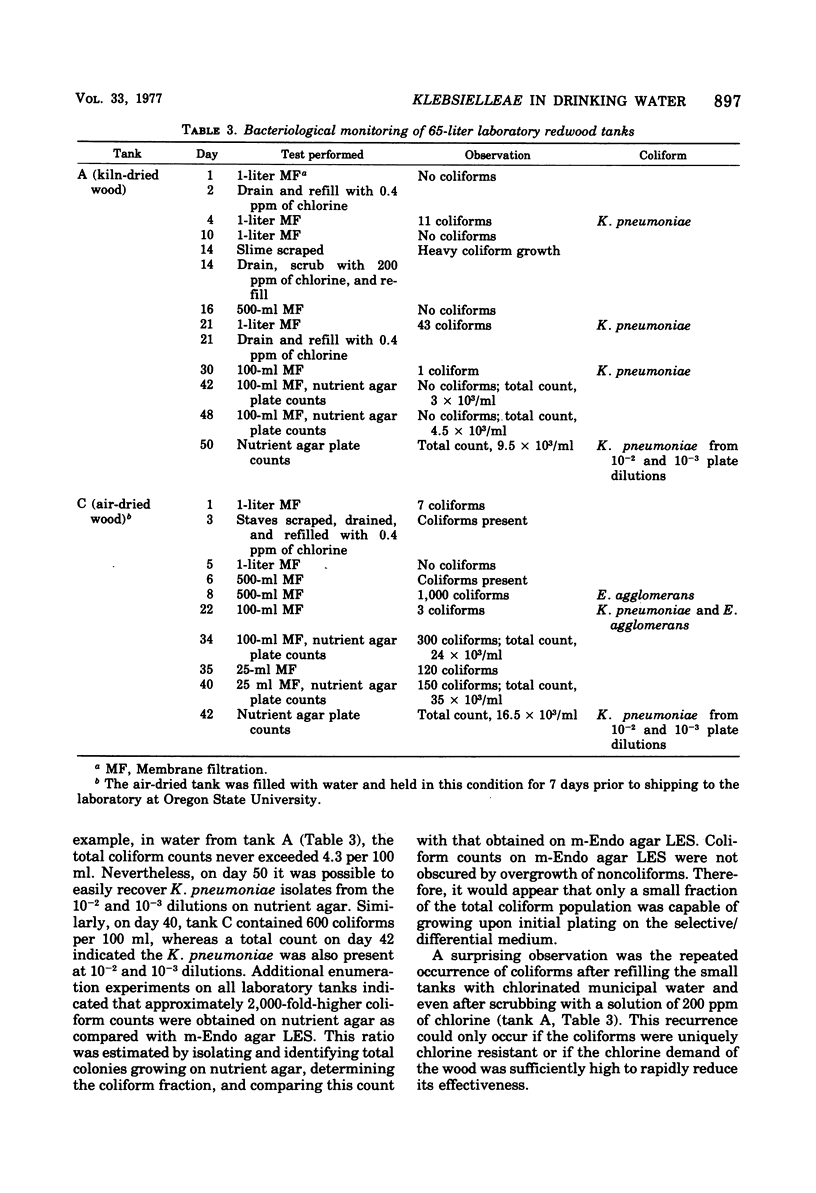
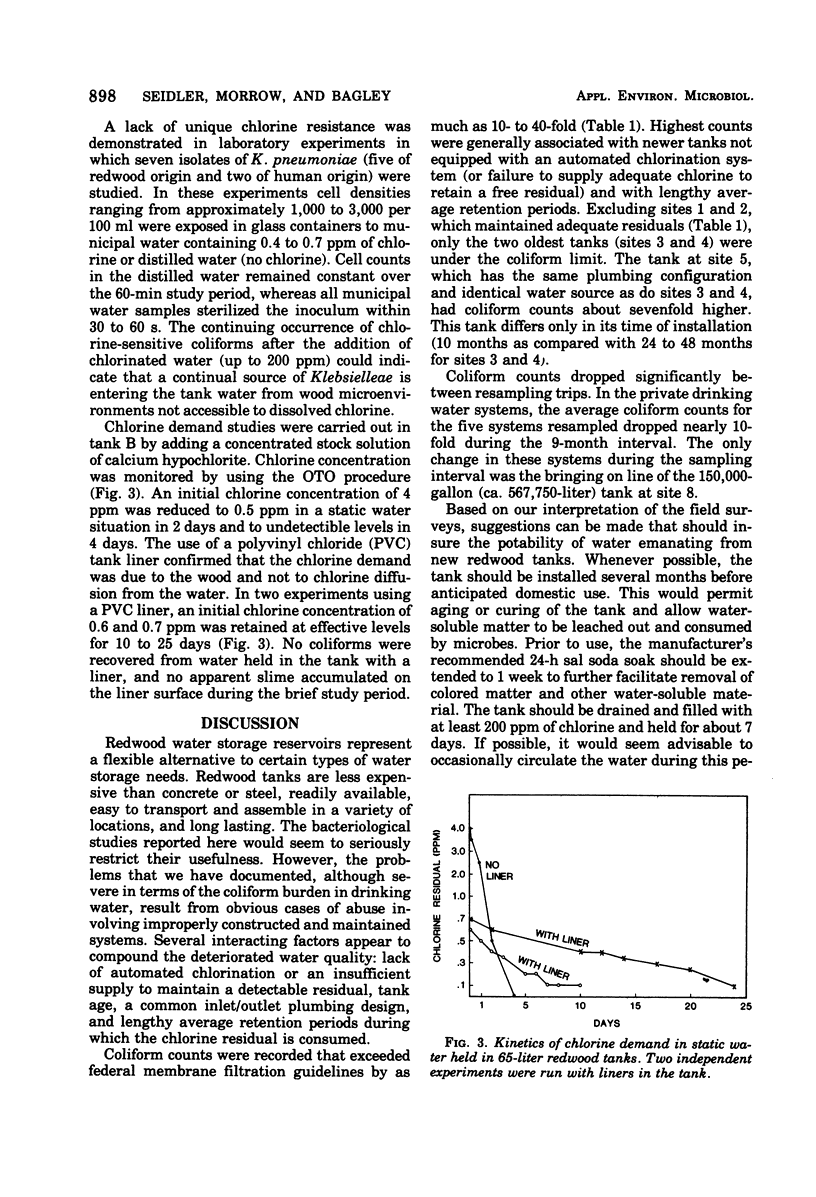
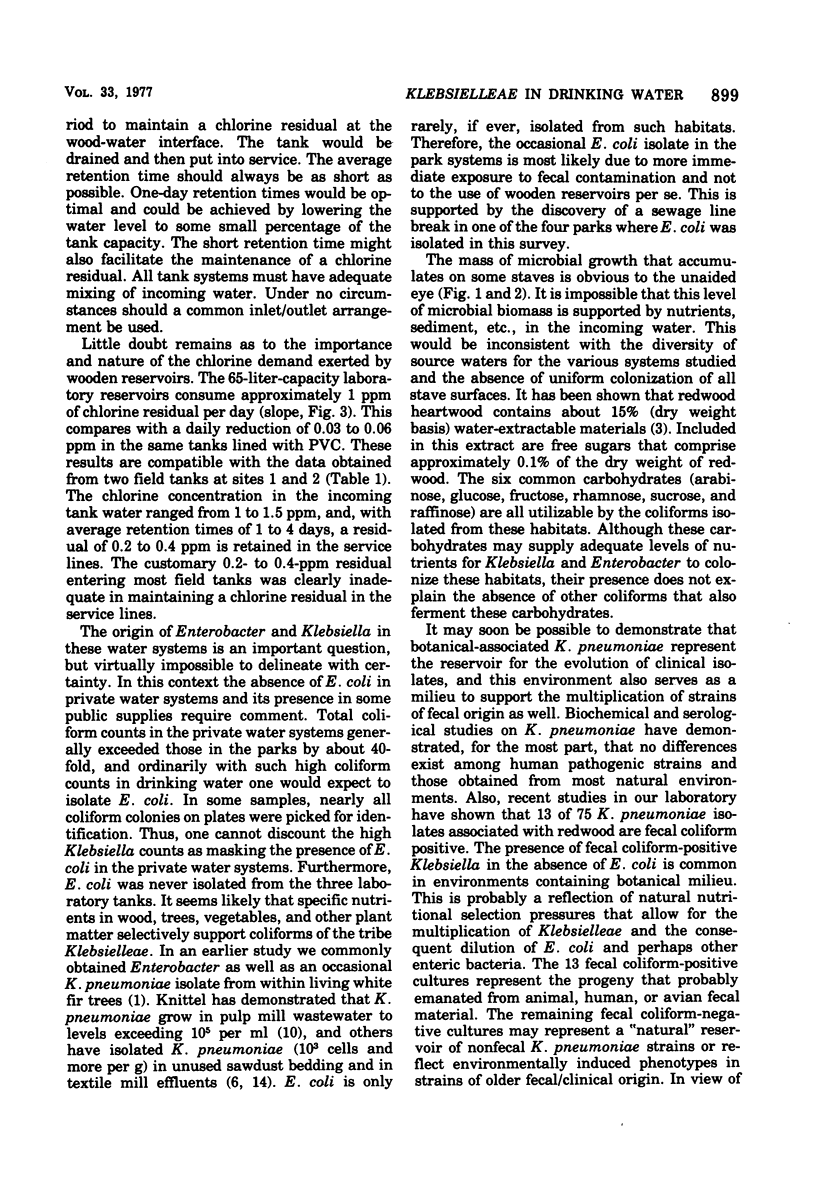
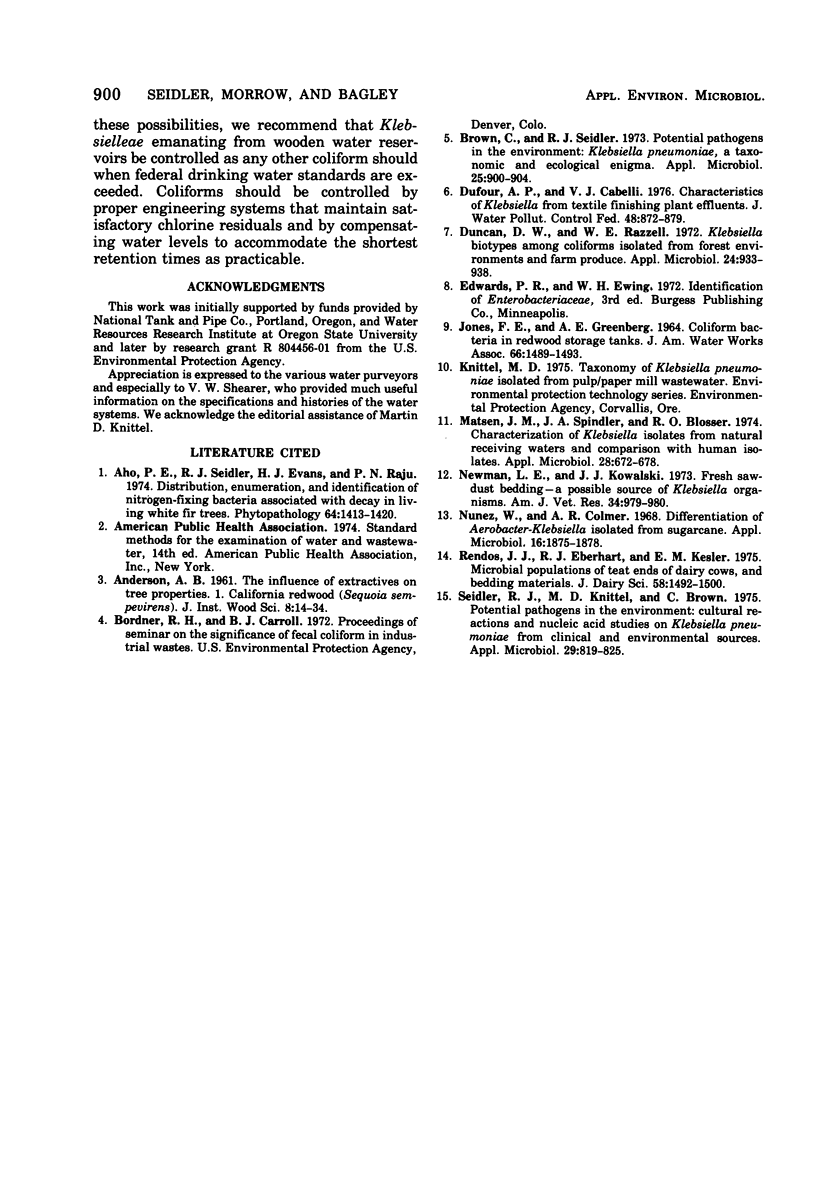
Images in this article
Selected References
These references are in PubMed. This may not be the complete list of references from this article.
- Brown C., Seidler R. J. Potential pathogens in the environment: Klebsiella pneumoniae, a taxonomic and ecological enigma. Appl Microbiol. 1973 Jun;25(6):900–904. doi: 10.1128/am.25.6.900-904.1973. [DOI] [PMC free article] [PubMed] [Google Scholar]
- Dufour A. P., Cabelli V. J. Charateristics of Klebsiella from textile finishing plant effluents. J Water Pollut Control Fed. 1976 May;48(5):872–879. [PubMed] [Google Scholar]
- Duncan D. W., Razzell W. E. Klebsiella biotypes among coliforms isolated from forest environments and farm produce. Appl Microbiol. 1972 Dec;24(6):933–938. doi: 10.1128/am.24.6.933-938.1972. [DOI] [PMC free article] [PubMed] [Google Scholar]
- Matsen J. M., Spindler J. A., Blosser R. O. Characterization of Klebsiella isolates from natural receiving waters and comparison with human isolates. Appl Microbiol. 1974 Oct;28(4):672–678. doi: 10.1128/am.28.4.672-678.1974. [DOI] [PMC free article] [PubMed] [Google Scholar]
- Newman L. E., Kowalski J. J. Fresh sawdust bedding--a possible source of Klebsiella organisms. Am J Vet Res. 1973 Jul;34(7):979–980. [PubMed] [Google Scholar]
- Nunez W. J., Colmer A. R. Differentiation of Aerobacter-Klebsiella isolated from sugarcane. Appl Microbiol. 1968 Dec;16(12):1875–1878. doi: 10.1128/am.16.12.1875-1878.1968. [DOI] [PMC free article] [PubMed] [Google Scholar]
- Seidler R. J., Knittel M. D., Brown C. Potential pathogens in the environment: cultural reactions and nucleic acid studies on Klebsiella pneumoniae from clinical and environmental sources. Appl Microbiol. 1975 Jun;29(6):819–825. doi: 10.1128/am.29.6.819-825.1975. [DOI] [PMC free article] [PubMed] [Google Scholar]




